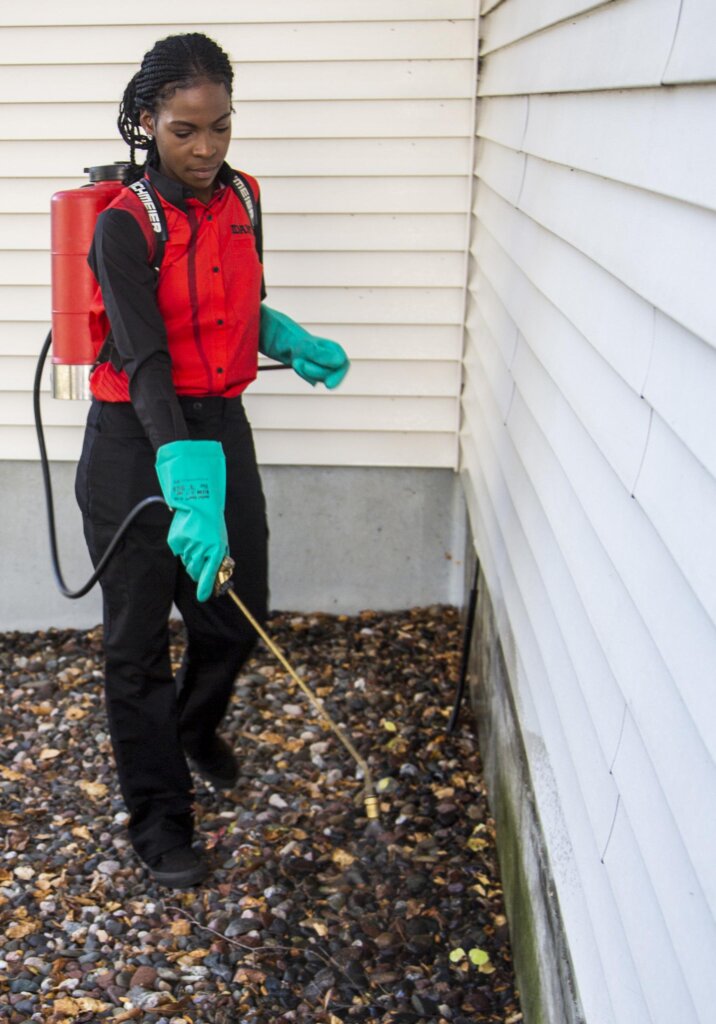Bed Pest Therapy Break Down: Contrasting Chemical Vs. Non-Chemical Solutions
In the realm of bug control, specifically when handling the relentless issue of bed insects, the selection in between chemical and non-chemical treatment services can be a pivotal one. Both strategies use distinctive benefits and drawbacks, influencing variables such as performance, safety and security factors to consider, and total expense. By examining the nuanced details of each method, a more clear understanding of which path to pursue in attending to a bed bug infestation can be achieved.
Efficiency of Chemical Treatments
Chemical therapies for bed bug problems have been widely acknowledged for their rapid and powerful effectiveness in eradicating these insects. When thinking about the performance of chemical therapies, it is crucial to understand that they can supply a quick and extensive option to a bed bug trouble.
Moreover, chemical treatments have the advantage of offering residual results, indicating that they can continue to get rid of bed pests also after the preliminary application. This recurring action is especially valuable in combating any potential re-infestations. Furthermore, the rapid action of chemical treatments can bring alleviation to individuals dealing with serious bed insect problems, allowing them to regain control of their living rooms rapidly.
Safety Interest In Chemical Solutions
One crucial aspect that requires careful factor to consider when using chemical options for bed pest therapy is making certain the safety of occupants and the environment. While chemical therapies can be efficient in removing bed pests, they may pose dangers if not handled properly. One of the key safety and security worries with chemical options is the potential harm they can create to human health and wellness. Exposure to certain chemicals made use of in bed insect treatments can lead to respiratory system issues, skin irritability, or various other damaging responses, specifically in people with pre-existing conditions or sensitivities. In addition, improper application or dose of chemical pesticides can lead to harmful deposits remaining in the cured area, posing long-term health and wellness risks to owners.
Moreover, the ecological impact of chemical remedies is one more substantial consideration. Some pesticides made use of in bed bug therapies might be dangerous to advantageous pests, wildlife, and ecological communities if they leach into the dirt or water systems. It is important to utilize chemical therapies deliberately, following safety standards, and considering much less toxic options to alleviate these dangers and make sure the reliable and safe administration of bed insect invasions.
Advantages of Non-Chemical Strategies
Considering the prospective safety problems and environmental impact associated with chemical services for bed insect treatment, discovering non-chemical methods offers an encouraging option with several distinctive benefits. Non-chemical therapies are ecologically friendly, as they do not contribute to air or water contamination, making them a lasting option for insect control.
In addition, non-chemical options can be effective in targeting bed bugs, consisting of hard-to-reach locations where chemical therapies may not pass resource through - A1 pest control charlotte nc bed bugs. Methods such as heat treatment, vacuuming, vapor cleansing, and mattress encasements provide thorough eradication without the usage of unsafe chemicals.
Limitations of Non-Chemical Treatments

Furthermore, non-chemical therapies commonly call for numerous applications to attain effective removal. This can be lengthy and may not always guarantee full elimination of all bed bugs and their eggs, specifically in hard-to-reach or concealed locations.
Additionally, the success of non-chemical treatments heavily depends on appropriate application and thoroughness, which can be challenging for people without expert know-how. Poor application of non-chemical approaches may cause insufficient elimination, causing consistent problems and the need for extra treatments.
As a result, while non-chemical treatments have their advantages, it is vital to recognize these constraints and consider them when determining one of the most reliable method for taking care of bed pest infestations.
Expense Contrast: Chemical Vs. Non-Chemical Options
Provided the restrictions associated with non-chemical his explanation treatments, an important element to review in the context of bed bug management is the price contrast in between chemical and non-chemical alternatives. In contrast, non-chemical treatments like warmth treatment or vapor can be a lot more costly, with costs varying from $1,000 to $6,000 for an entire home. While the preliminary cost of chemical treatments may appear lower, numerous treatments might be required to totally remove the infestation, possibly increasing the general price.
Final Thought

Taking into consideration the possible safety and security worries and ecological effect associated with chemical solutions for bed insect therapy, checking out non-chemical strategies presents an appealing choice with a number of distinctive advantages.Offered the restrictions associated with non-chemical therapies, a vital facet to evaluate in the context of bed bug administration is the cost comparison between chemical and non-chemical options. In comparison, non-chemical treatments like warm therapy or heavy steam can be extra expensive, with prices ranging from $1,000 to $6,000 for an entire home. While the first cost of chemical therapies might appear lower, numerous treatments may be required to completely get rid of the infestation, potentially increasing the overall price.In verdict, when contrasting chemical and non-chemical bed pest therapy options, it is necessary to take into consideration efficiency, safety, benefits, constraints, and cost.